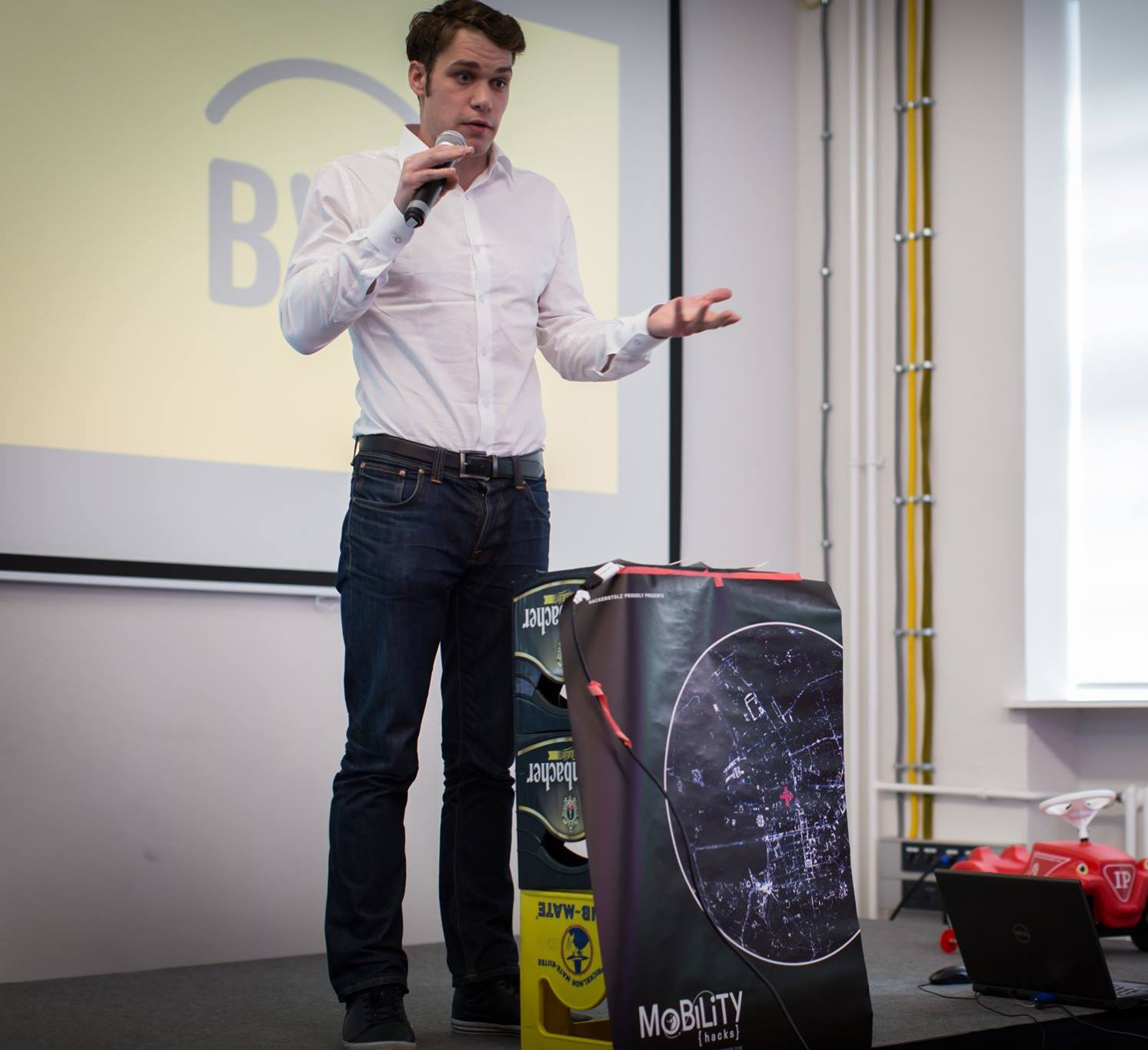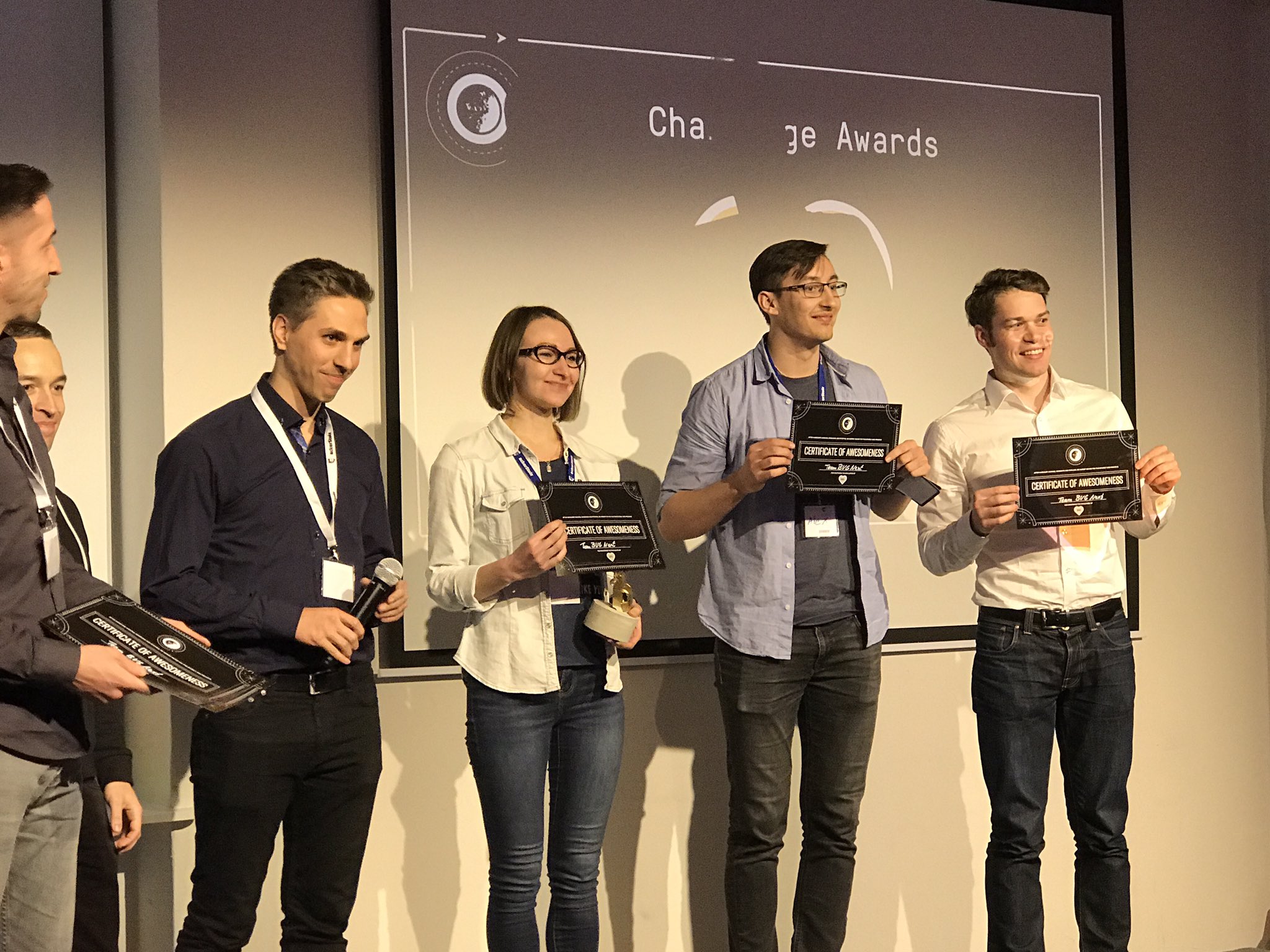Berlin’s public trainsportation provider, BVG, services one of the largest cities in Europe. They’ve grown into one of the largest metro and bus systems in the world with a ridership of over 500 million people per year. They dominate the market but they know that they need to continue to innovate to keep their customers happy.
BVG and other German transportation providers sponsored a hackathon in Berlin from December 2-4, 2016. We divided into small teams and spent 1.5 days designing solutions for the companys’ problems. We presented our work on the afternoon of the last day in front of a panel of judges and competed for prizes.

Nadya, Alex, and I met on the first day and formed Team BVG Next. That night Alex came up with an idea to create an augmented reality interface for the information panel on BVG’s subway stations. In the physical world the panel shows the line trains are running on, the direction they’re going, and the amount of time it’ll take for them to arrive at the station.

We created 4 virtual panels that encircled the subway’s information panel on the top, bottom, left, and right. We included information about the weather, the capacity of the train, a map of the area around the station, and the stops of the subway line. It’s difficult to appreciated the app through pictures so we created a video. Take a look!
I arrived in Berlin the day the hackathon began. After my plane landed I took the bus to a subway station and got on. As I exited the metro I walked down a flight of stairs and dropped my phone. It was dead. I had no data, no maps, and no idea how to get to my Airbnb. Luckily, I had a spare phone. I wandered around the area for 20 minutes, found a bar, and used their wifi to download maps of the area. It wasn’t easy but I made it to the Airbnb apartment.
I had my phone out as I was walking down the subway stairs because I was checking which direction I should go out of the station. If I was able to view the map on the platform of the station I would have known where I was going and my phone would have been safe in my pocket.

We’re proud of what we were able to accomplish in a day and a half. I believe augmented reality has real potential to be the next major technological breakthrough. Pokemon Go made it more mainstream but businesses are only now starting to discover the impact it can have on their bottom line.